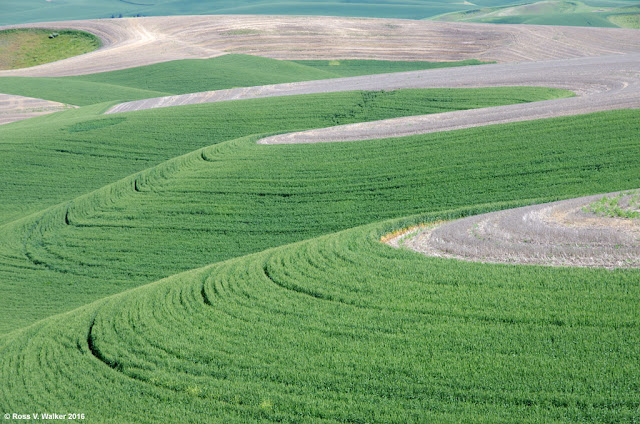As I mentioned in my two previous posts, back roads are the
way to go in the Palouse. There is no
traffic, it is easy to find a place to stop, and maybe you will discover a
location that isn’t photographed very often.
Most of our Palouse photos were taken on dirt or gravel
roads, and sometimes I found that the roads themselves were great photo
opportunities. This one was near
Steptoe.
How did we decide which roads to take? This one is Rim Rock Road near Colton,
Washington. In this case we just had a
few minutes and took a turn at random near our B&B in Uniontown.
I like S-curves, and roads often have this great composition
element. We found this road near St John
on a “Photographing the Palouse” brochure that highlighted barns, lone trees,
windmills, and abandoned houses.
This is another dirt road near Steptoe. The rolling hills and fields were wonderful
to explore. The best resource for finding
back roads was a map of Whitman County, Washington that shows every little dirt
track. I picked it up at the county
offices in Colfax on a previous trip.
I loved the way this road followed a bank covered with
wildflowers that led right to a lone tree near Steptoe. It is important to be cautious on these
roads. You will be a long way from help,
and may not have cell phone coverage, so if you don’t have four wheel drive,
keep out of mud holes and loose sand. We
didn’t take chances, and turned back twice in our four days in the Palouse, but
we had a wonderful time.
As always, please do not use our photos for any reason
without our permission. Thanks.

















